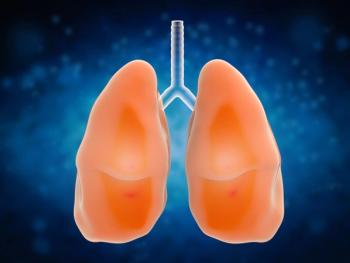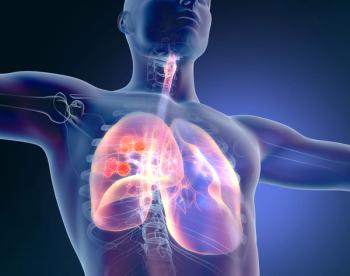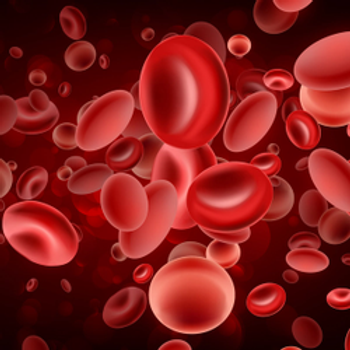
- ONCOLOGY Vol 39, Issue 7
- Volume 39
- Issue 7
- Pages: 278-279
New Colon Cancer Data Shows Importance of Exercise Therapy for Survival
Exercise significantly enhances cancer treatment outcomes, improving survival rates and quality of life for patients with colon cancer who have completed therapy.
Inclusion of exercise as part of symptom management for patients undergoing cancer treatment is recommended by several national agencies, including the American Society of Clinical Oncology (ASCO).1,2 Several studies have now shown that exercise during and after cancer treatment improves patient-reported outcomes, treatment-associated adverse effects (AEs), cardiorespiratory fitness (CRF), and overall physical functioning.3-6 More recently, preclinical evidence has identified mechanisms through which exercise could have direct tumor suppressive effects.7,8 New evidence confirms that exercise improves cancer-specific survival for survivors of high-risk colon cancer.
The CHALLENGE trial (NCT00819208) enrolled 889 patients with stage III (90%) or high-risk stage II (10%) colon cancer, after completion of curative intent surgery and adjuvant chemotherapy.9 Patients were randomly assigned to a structured exercise program or a health education control arm promoting physical activity and healthy eating.
The exercise arm included behavioral change training and supervised exercise sessions to increase moderate or high intensity recreational aerobic exercise during the first 6 months and then to maintain or continue increasing for the remaining 2.5 years of the study intervention. During the first 6 months, intervention participants attended 12 in-person behavioral-support sessions every 2 weeks, 12 mandatory supervised exercise sessions, and 12 recommended supervised exercise sessions on alternate weeks. During the next 6 months, the behavioral-support sessions were continued every 2 weeks and could be in-person or remote, combined with a supervised exercise session if attended in-person. During the final 2 years, participants attended monthly in-person or remote behavioral-support sessions, which were paired with a supervised exercise session if attended in-person.
Adherence rates were approximately 80% during the first 6 months, decreased to 50% to 68% for the next 6 months, and remained relatively stable (63%) for the remaining 24 months. Patients in the exercise group increased moderate to vigorous physical activity vs the health education control group and had greater improvements in fitness and distance walked within 6 minutes. There were no differences in body weight or waist circumference changes.
The exercise intervention group experienced a 28% improvement in disease-free survival (DFS) and a 37% improvement in overall survival (OS), with a median follow-up time of 7.9 years. The HR for disease recurrence, new primary cancer, or death was 0.72 (95% CI, 0.55 to 0.94; P = .02). The annual incidence of the previous measures was 3.7% (95% CI, 3.0 to 4.5) in the exercise group and 5.4% (95% CI, 4.5 to 6.4) in the health-education group. The 5-year DFS was 80.3% 73.9% in the control group (95% CI, 0.6 to 12.2), and the 8-year OS was 90.3% and 83.2%, respectively. Patients in the exercise group also experienced improvements in self-reported physical functioning. Exercise program participants reported more musculoskeletal AEs, including 19% with bone fractures vs the control group (12% with bone fractures). The investigators reported that 10% of AEs in the intervention arm were related to the exercise program.
The CHALLENGE trial represents a seminal advance in exercise oncology as it demonstrates improvements in cancer-specific end points from exercise. These data confirm decades of observational reports and mounting preclinical and translational evidence indicating an anticancer effect of exercise. It is important to note that exercise did not replace standard cancer (SOC) therapy, which was completed prior to trial enrollment.
There are also some key limitations of the trial. It took approximately 15 years to complete accrual, showing the challenge of an exercise intervention in the context of a clinical trial with available infrastructure. The trial was designed to detect differences in 3-year DFS rates, slower accrual and the lower event rate pushed analysis to 5 years, and the 3-year prespecified analysis was not reported. These limitations do not detract from the overall findings of this trial and the broader evidence base supporting the beneficial effects of exercise in multiple domains such as quality of life, symptom control, cardiometabolic morbidity and mortality.
The challenge will be to implement exercise into the SOC. Positive results from phase 3 drug trials in oncology often lead to rapid incorporation into guidelines and clinical practice. Implementation of an exercise program is more complex – requiring trained personnel, equipment, and infrastructure. Given the significant improvements in cancer-specific and overall mortality induced by exercise, however, we cannot afford not to offer exercise treatment to patients with colon cancer.
References
- Ligibel JA, Bohlke K, May AM, et al. Exercise, diet, and weight management during cancer treatment: ASCO Guideline. J Clin Oncol. 2022;40(22):2491-2507. doi:10.1200/JCO.22.00687
- Campbell KL, Winters-Stone KM, Wiskemann J, et al. Exercise guidelines for cancer survivors: consensus statement from international multidisciplinary roundtable. Med Sci Sports Exerc. 2019;51(11):2375-2390. doi:10.1249/MSS.0000000000002116
- Markes M, Brockow T, Resch KL. Exercise for women receiving adjuvant therapy for breast cancer. Cochrane Database Syst Rev. 2006;(4):CD005001. doi:10.1002/14651858.CD005001.pub2
- Yunfeng G, Weiyang H, Xueyang H, Yilong H, Xin G. Exercise overcome adverse effects among prostate cancer patients receiving androgen deprivation therapy: An update meta-analysis. Medicine (Baltimore). 2017;96(27):e7368. doi:10.1097/MD.0000000000007368
- Scott JM, Zabor EC, Schwitzer E, et al. Efficacy of exercise therapy on cardiorespiratory fitness in patients with cancer: a systematic review and meta-analysis. J Clin Oncol. 2018;36(22):2297-2305. doi:10.1200/JCO.2017.77.5809
- Mishra SI, Scherer RW, Snyder C, Geigle PM, Berlanstein DR, Topaloglu O. Exercise interventions on health-related quality of life for people with cancer during active treatment. Clin Otolaryngol. 2012;37(5):390-392. doi:10.1111/coa.12015
- Iyengar NM, Jones LW. Development of exercise as interception therapy for cancer: a review. JAMA Oncol. 2019;5(11):1620-1627. doi:10.1001/jamaoncol.2019.2585
- Koelwyn GJ, Quail DF, Zhang X, White RM, Jones LW. Exercise-dependent regulation of the tumour microenvironment. Nat Rev Cancer. 2017;17(10):620-632. doi:10.1038/nrc.2017.78
- Courneya KS, Vardy JL, O'Callaghan CJ, et al. Structured exercise after adjuvant chemotherapy for colon cancer. N Engl J Med. 2025;393(1):13-25. doi:10.1056/NEJMoa2502760
Articles in this issue
Newsletter
Stay up to date on recent advances in the multidisciplinary approach to cancer.





